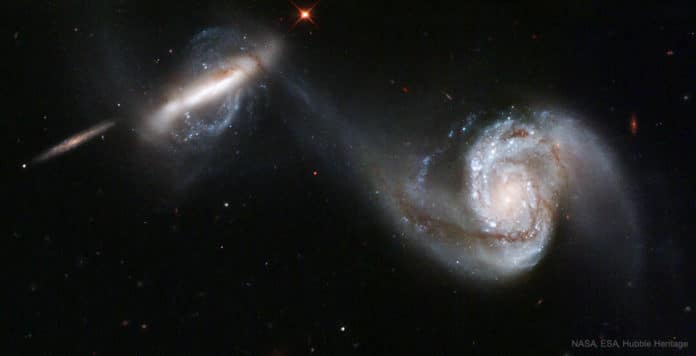Galaxy mergers and interactions are an integral part of our basic understanding of how galaxies grow and evolve over time. However, the effect that galaxy mergers have on star-formation rates (SFRs) is contested, with observations of galaxy mergers showing reduced, enhanced, and highly enhanced star formation.
In a new study, scientists determined the effect of galaxy mergers on the star-formation rates of galaxies using statistically large samples of galaxies, totaling over 200 000, which is over a large redshift range from 0.0 to 4.0.
A group of astronomers used over 200,000 galaxies as a sample and confirmed that galaxy mergers are the driving force behind starbursts. This is for the first time, scientists have used AI in a galaxy merger study.
The most popular theory is that the galaxy mergers go hand-in-hand with short starburst phases and an increase of around a factor two in star formation over the whole duration of the merger. Mergers would produce shock waves in the interstellar gas, igniting significant baby booms of stars.
Astronomers confirmed this theory by analyzing a record number of over 200,000 galaxies using AI and discovered up to twice the number of starbursts in merging galaxies compared to single galaxies.
First author William Pearson said, “The advantage of artificial intelligence is that it improves the reproducibility of our study because the algorithm is consistent in its definitions of a merger. Also, it’s good preparation for upcoming surveys that will image billions of galaxies. Then you inevitably need AI. Even citizen science projects such as Galaxy Zoo cannot deal with those numbers.”
Lingyu Wang (SRON Netherlands Institute for Space Research) said, “This is a milestone in the sense that AI will play an increasingly large role in our field. But we have to keep in mind that the power of AI is limited to how it is trained. If we feed it a flawed definition of a galaxy merger, then it won’t do its job correctly.”
The study is published in the journal Astronomy & Astrophysics.
